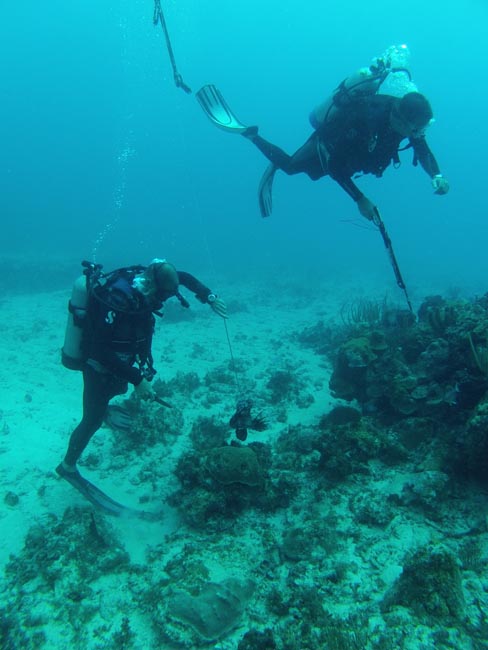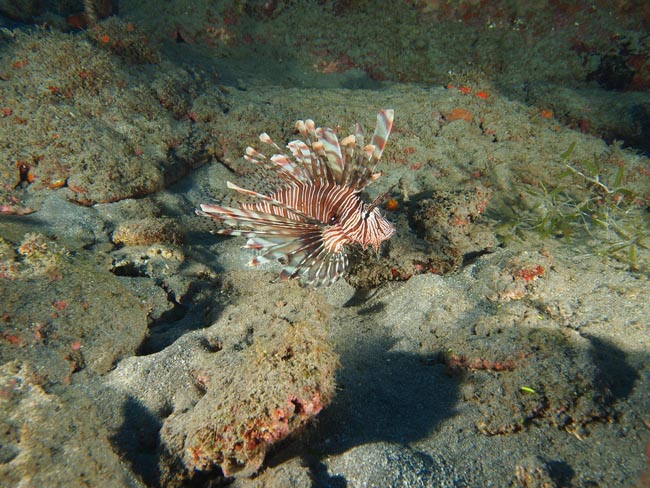In 2013, the guards caught 57 lion fish in the Nature Reserve waters, cut them in half and left them where they were discovered. The aim was to get other fish to start enjoying the taste of their flesh, and eventually become their predators. The tests to determine if their flesh is contaminated by ciguatera toxins continue, the initial results have shown that certain fish were infected, and others weren’t, depending on their origin. The guards, as well as two professional fishermen, continue to collect specimens at different depths and sites. These specimens will be studied by the Institut Pasteur, which will then allow us to determine precisely at which sites the lion fish are edible and at which sites they are not.
Lion fish and ciguatera
Poisson-lion | Lion fish © Julien Chalifour

















